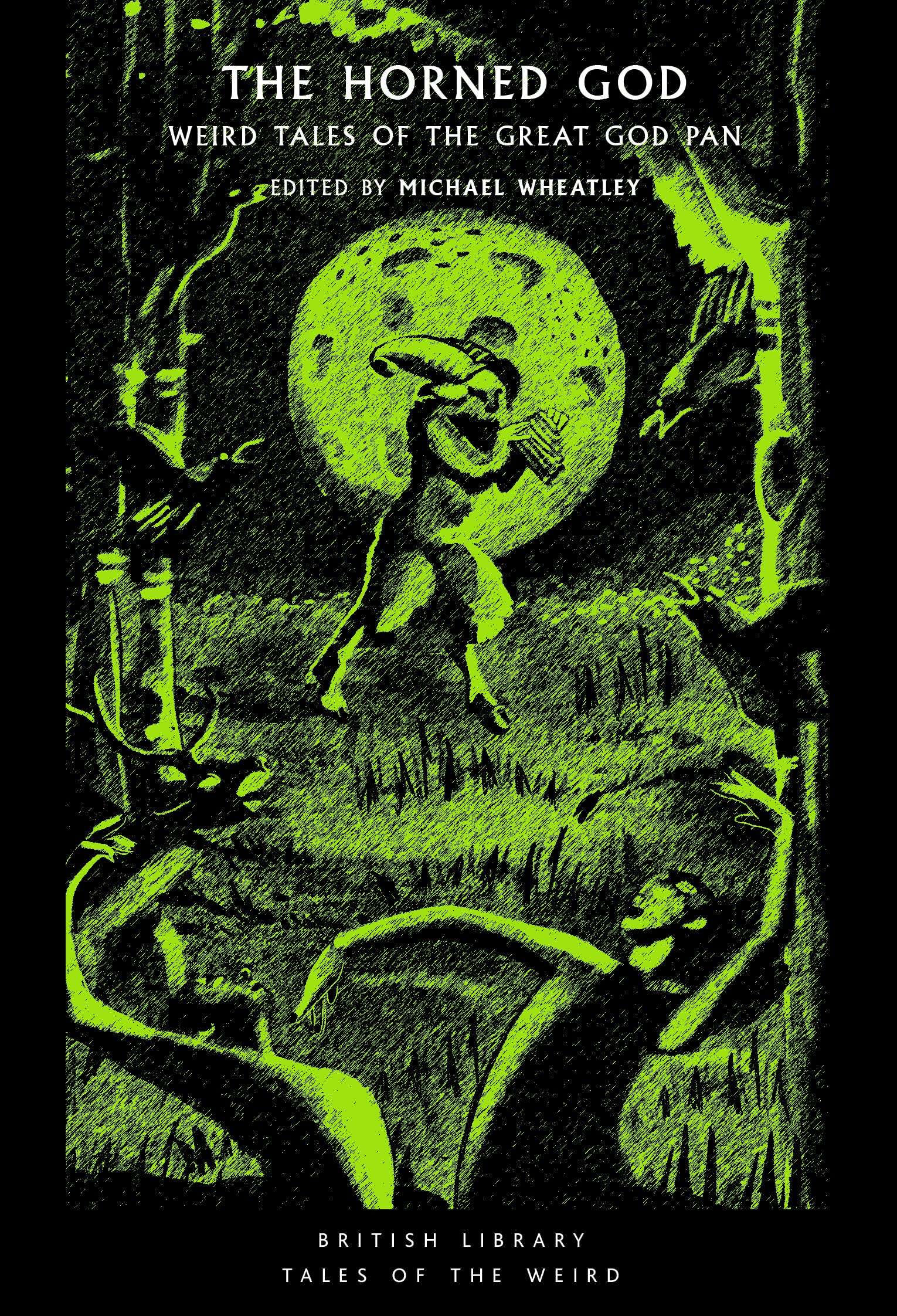THE HORNED GOD: Weird Tales of the Great God Pan edited by Michael Wheatley
British Library, 319-page p/b, £9.99
Reviewed by Pauline Morgan

The Greek God Pan was an entity of wood and field who had a number of conflicting attributes. Most stories agree that he had the legs and hooves of a goat and horns. And that he played the syrinx (pan pipes). He was also lewd and was wont to chase females. Whereas most of the classical gods have passed out of favour, Pan continues to excite the imagination of writers. This collection has reprinted not only some of the best stories around the concept of the serial seducer but also poems and some of the illustrations that feature him. As in all these anthologies produced by the British Library, the stories tend to reflect the time they were written.
Mythological subjects have always been a well-used source for poetry. Of the six poets included in this volume, two names will be recognised by the majority of the reading public. Oscar Wilde’s contribution, ‘Pan: A Double Villanelle’ (1907), is a recognised poetic form and looks back to a time when most supposed life was simpler. Elizabeth Barrett Browning’s poem, ‘A Musical Instrument’ (1860), tells the story of how a lascivious Pan came to make his syrinx, named after the nymph he was pursuing but better known as Pan Pipes. ‘The Haunted Forest’ by Edith Hurley (1929) evokes the feeling that there are still traces of the old gods in the silent parts of a forest. ‘Bewitched’ by Willard N. Marsh (1945) has a more sinister feel. ‘The Forest God’ by Dorothy Quick (1947) describes the spell Pan casts over those who catch a glimpse of him or hear his music. The Pan described in ‘Moors Of Wran’ by A. Lloyd Bayne (1931) suggests the destructive side of the god.
A piece that may be familiar to older readers is ‘The Piper At The Gates Of Dawn’ by Kenneth Grahame (1907) is a part of The Wind in the Willows. In it, Mole and Rat head upriver in search of Otter’s child. They meet Pan as dawn arrives. One of the focuses of this story is the music Pan plays. Music is also important in ‘The Golden Bough’ by David A. Keller (1942). A newly married couple travel, seeking the house she saw in a dream. When they find it and take up residence, it is music that lures her into the woods and ultimate tragedy. There are similarities between this and ‘The Cracks Of Time’ by Dorothy Quick (1948). A newly married couple has brought back a mosaic from their honeymoon. She sees the face of Pan within it, and his music entices her towards tragedy.
Pan is not only associated with music, and many of these stories include this and sexual prowess, but he is also a trickster and encounters with him are not always pleasant. Many of the stories invoke Pan as an adjunct to the main thrust of the story. ‘The Great God Pan’ by Arthur Machen (1894) is a complex story involving an experiment on a young woman that is intended to give her the facility of seeing Pan but sets off a chain of unforeseen events. It is a horrific story though much of the horror is implied as it takes place off-stage.
In ‘Pan’ by George Egerton (1897), music is important. The beautiful descriptions tell how a young girl is enchanted by a musician. In ‘The Moon-Slave’ by Barry Pain (1901), Viola makes a vow to dance for the full moon and falls into the trap of having to dance to ethereal music every month at the centre of a maze.
Although music plays a part in Saki’s ‘The Music On The Hill’ (1911), it is more of a clash between old folklore followed by the local people and the incomer who sees their traditions as superstitious nonsense. In this case, it is a young woman. ‘How Pan Came To Little Ingleton’ by Margery Lawrence (1926) has a similar theme, but in this case, it is the new village parson who tries to instil strict Christian values on his flock. When none turn up for the service on Midsummer Day, he looks for them and meets Pan instead and has an epiphany.
‘The Story Of A Panic’ by E.M. Forster (1911) utilises the connection between Pan and the state of irrational fear that cause panic. A group of tourists in Italy go for a picnic, but one, a bored teenage boy, makes a whistle, and when he blows it, it appears to summon something, which sends the rest of the party running down the hill in a panic. After this episode, the boy’s behaviour changes for the worse.
Pan is a woodland god and a part of the bucolic natural world. In ‘The Touch Of Pan’ by Algernon Blackwood (1917). Here, two young people, out of sync with the society they are part of, find joy in each other and become part of nature.
As a pagan god, Pan was regarded by the Church as an embodiment of evil in ‘The Devil’s Martyr’ by Signe Toksvig (1928). This is a tussle between the Christian Church and pagan beliefs over the heart and mind of youth. What makes the story more horrific is that part of the Church’s motivation is greed.
The idea of Pan is likely to continue to weave through the imaginations of fantasy and horror writers. Like all of the stories chosen for British Library volumes, they reflect the time they are written.

